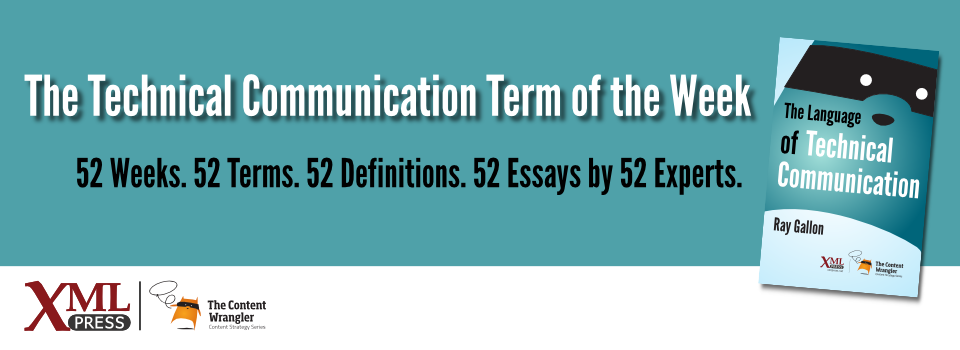What is it?
Industry-defined file formats for images, video, audio, and other multi-sensory content that can be included as a resource in a structured XML document.
Why is it important?
Media standards provide a consistent technical method for delivering these experiences to a variety of output formats from single-source content (XML). The prominent documentation standards have dedicated elements for referencing media: DocBook has <inlinemediaobject> and <mediaobject> elements; DITA has <image> and <object>; TEI has the <media> element.
Why does a technical communicator need to know this?
Engaging multiple senses helps an audience consume, remember and respond to your content. Some audiences are more visually-oriented, some are more auditory, and some have accessibility needs. Media standards provide a consistent way for you to enhance the communication experience using a variety of the audience’s senses.
Sight: Standard image formats include:
- Vector
- SVG: Scalable Vector Graphics (XML-encoded)
- CGM: Computer Graphics Metafile
- U3D: Universal 3D, a format for 3D graphics data
- Raster
- TIFF: common for high-resolution print and editing
- PNG: widely used for web, mobile, and print
- JPG: compressed, smaller files, preferred for photos
- GIF: widely used bitmap format for web, supports animation
- BMP: raw, uncompressed bitmap
Standard video formats include: MPEG (MP4), AVI and H.264.
SVG is the only XML-based format for images. It can scale to any display and supports embedded, localized text. Most modern browsers and print engines can render SVG.
Sound: While the video formats support both visuals and sound, standard audio-only formats include: MPEG (MP3), WAV and AIFF. The same markup is typically used to reference audio and video content in XML, though DocBook has distinct elements for <audioobject> and <videoobject>.
Touch: Primarily found in game content, haptic feedback will become more prominent in AR and VR delivery. MPEG-7 provides metadata for describing scenes. More formally, touch-enhanced content can be described using the Haptic Application Meta-Language (HAML) and Sensory Effect Description Language.
Smell and taste: While yet to become mainstream, taste and smell have markup languages under development, but consistent delivery of taste and smell content will require overcoming technical hurdles.

